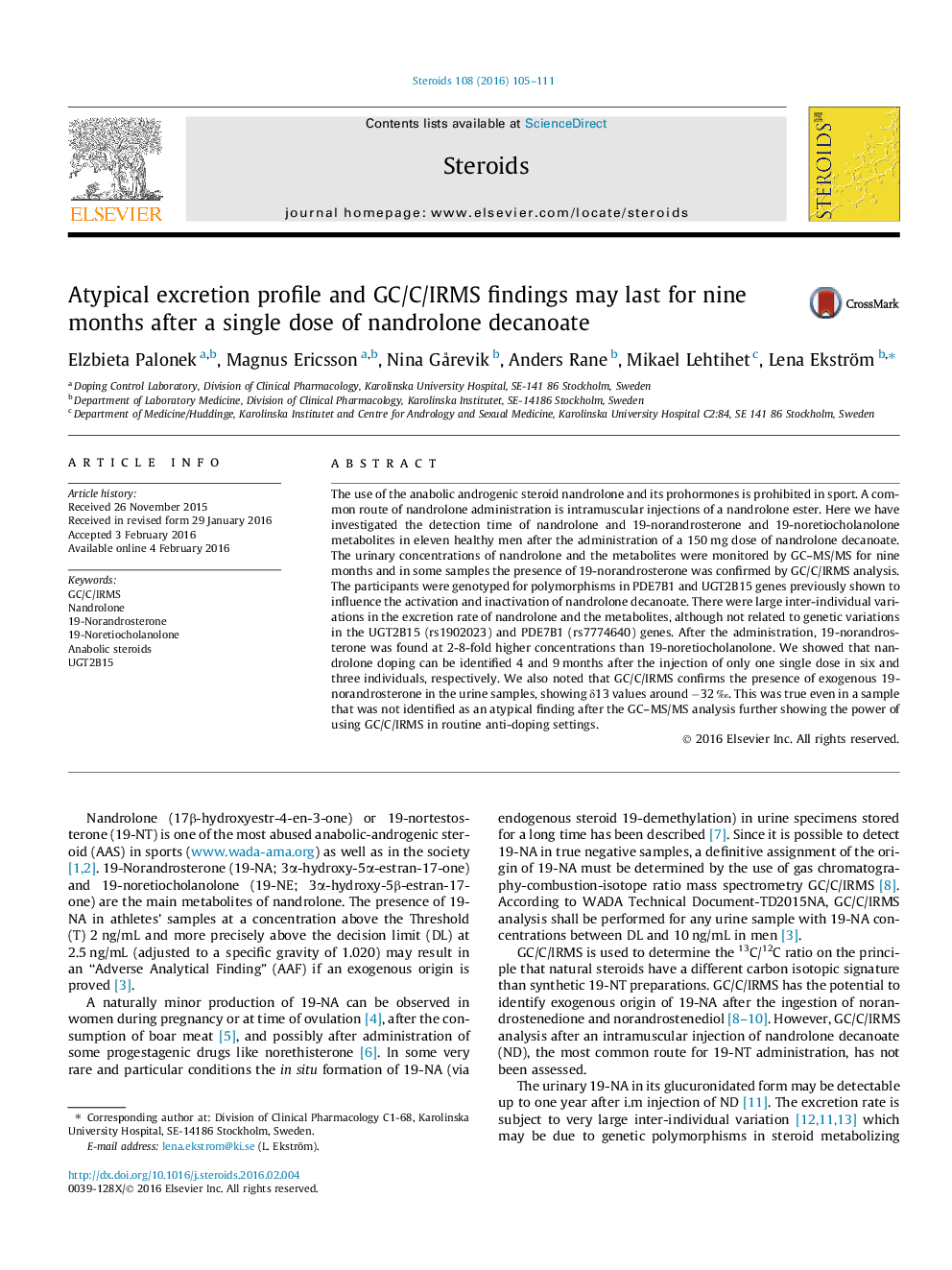| Article ID | Journal | Published Year | Pages | File Type |
|---|---|---|---|---|
| 2027635 | Steroids | 2016 | 7 Pages |
•There were large inter-individual variation in the urinary excretion profile of nandrolone and its metabolites after the administration of nandrolone decanoate.•Six and three of eleven individuals were identified as adverse analytical findings 120 and 270 days after the injection of only one single dose nandrolone decanoate.•GC/C/IRMS confirmed the presence of exogenous 19-norandrosterone long time after the administration, even in a sample below the WADA decision limit.
The use of the anabolic androgenic steroid nandrolone and its prohormones is prohibited in sport. A common route of nandrolone administration is intramuscular injections of a nandrolone ester. Here we have investigated the detection time of nandrolone and 19-norandrosterone and 19-noretiocholanolone metabolites in eleven healthy men after the administration of a 150 mg dose of nandrolone decanoate. The urinary concentrations of nandrolone and the metabolites were monitored by GC–MS/MS for nine months and in some samples the presence of 19-norandrosterone was confirmed by GC/C/IRMS analysis. The participants were genotyped for polymorphisms in PDE7B1 and UGT2B15 genes previously shown to influence the activation and inactivation of nandrolone decanoate. There were large inter-individual variations in the excretion rate of nandrolone and the metabolites, although not related to genetic variations in the UGT2B15 (rs1902023) and PDE7B1 (rs7774640) genes. After the administration, 19-norandrosterone was found at 2-8-fold higher concentrations than 19-noretiocholanolone. We showed that nandrolone doping can be identified 4 and 9 months after the injection of only one single dose in six and three individuals, respectively. We also noted that GC/C/IRMS confirms the presence of exogenous 19-norandrosterone in the urine samples, showing δ13 values around −32 ‰. This was true even in a sample that was not identified as an atypical finding after the GC–MS/MS analysis further showing the power of using GC/C/IRMS in routine anti-doping settings.
